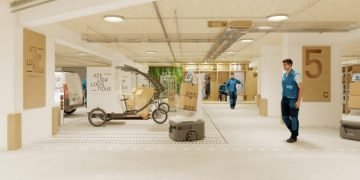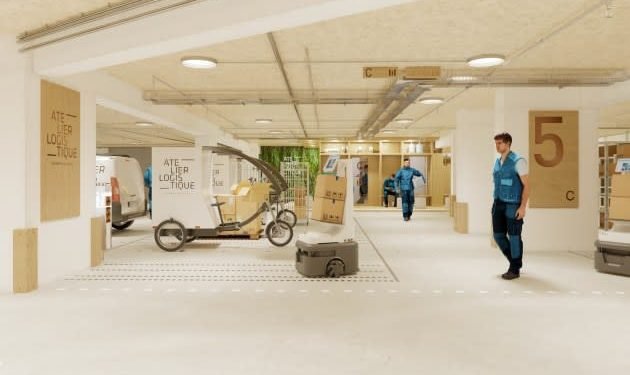By Eva Richardson | The Logistic News
April 14, 2025
In a bold reimagining of city infrastructure, Paris has unveiled plans to transform a former underground car park beneath the Champs-Élysées into a fully automated urban logistics hub. The project—set to be operational by summer 2026—is expected to reshape how goods are stored and distributed in one of the world’s densest city centers.
Located across nine subterranean levels and spanning over 16,000 square meters, the future site—known as L’Atelier Logistique—is being developed by Mont Thabor Group and Swiss Life Asset Managers, in collaboration with Everest Holding.
The initiative signals a turning point in urban logistics: not just in Paris, but potentially across other major cities grappling with the challenges of last-mile delivery, pollution, and traffic congestion.
A Robotic Revolution Below Street Level
The facility will feature next-generation automation, including AI-powered robots and intelligent pallet-moving systems designed to optimize inventory flow and reduce handling times. These machines will operate silently beneath Paris’s most iconic avenue, far removed from the noise and congestion above.
Goods will be received, sorted, and dispatched without human intervention, with technology coordinating the flow of parcels and merchandise for timely, secure delivery.
“Paris is giving a second life to underground space, using it not for cars, but for smarter, greener logistics,” said a project stakeholder familiar with the development.
Greener, Smarter Last-Mile Delivery
A key feature of the hub is its ability to support sustainable last-mile logistics. Deliveries to nearby retailers—especially high-end boutiques, fashion houses, and sporting goods stores—will be completed using electric vans and cargo bikes, helping cut surface traffic and lower CO₂ emissions in central Paris.
The facility will also offer on-demand storage solutions for urban businesses, enabling just-in-time replenishment and reducing the need for oversized retail stockrooms.
This is in line with the city’s broader push toward zero-emissions logistics and better urban air quality by 2030.
Economic and Human Impact
While the system will be largely automated, the hub is expected to create over 100 new jobs, including technicians, operations managers, and maintenance staff. The developers have emphasized worker wellbeing, promising rest areas, optimized lighting, and humidity-controlled work environments deep underground.
“This isn’t just about robotics,” one executive involved in the project noted. “It’s also about making logistics human-friendly again—smarter for the city, and healthier for the people working in it.”
A Blueprint for Other Global Cities
As metropolitan areas across the world struggle with urban density and delivery demand, Paris’s logistics bunker could serve as a model for repurposing unused underground infrastructure. With real estate above ground becoming increasingly scarce and expensive, subterranean logistics may offer a scalable alternative for future-ready cities.
Eva Richardson is a senior correspondent for The Logistic News. She covers urban logistics innovation, sustainable distribution models, and smart city infrastructure.























